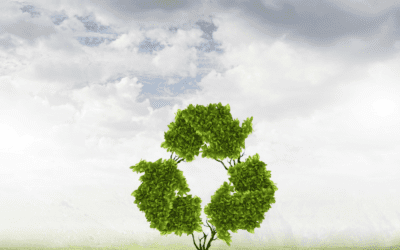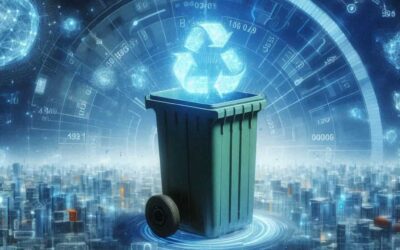Hydrogen is now regarded as a key fuel in the race to reach net zero targets across the globe. But it is currently expensive, so how can technology and innovative research be applied to produce it more cheaply, whilst remaining sustainable?
Why is hydrogen important to net zero?
There are a number of reasons why hydrogen has a clear future as a fuel source that will help to meet the challenges of the climate crisis. While traditional fuels, such as gas, coal and oil, emit significant amounts of CO2 both in their production and their use, hydrogen’s only byproduct is water. And, because hydrogen can be stored and reused quickly, it also has advantages over batteries and other renewable fuel sources.
According to the website, Advanced Science News, the global consumption of hydrogen reached 94 million tonnes in 2021, and its use is predicted to grow considerably over the coming years. Currently, however, the main way of producing hydrogen is through using fossil fuels and a process known as steam-methane reforming – which produces significant CO2 emissions.
Because hydrogen has such potential as a fuel, there has been considerable research into other ways of producing it, and some of this research is now being used in commercial hydrogen production. For example, in 2023, researchers from the Department of Materials Science and NanoEngineering at Rice University in Texas, USA, have developed the technology to convert plastic waste into clean hydrogen gas and graphene without any CO2 emissions.
Speaking to Advanced Science News, one of the researchers, Kevin Wyss, said: “What if we turned waste plastic into something much more valuable than recycled plastic while at the same time capturing the hydrogen that is locked inside?”
“We discharge current through the sample of plastic, with a small amount of added ash to make it conductive, and achieve temperatures up to 2,500°C within a tenth of a second, before the sample cools back down within a few seconds,” said Wyss. “This rapid heating reorganizes the chemical bonds in the plastic — the carbon atoms in the plastic convert to the [carbon-carbon] bonds of graphene, and the hydrogen atoms convert to H2 [gas].”
“This process upcycles the waste plastics with high efficiency using no catalyst or other solvents,” he continued. “Once our plastics have undergone the reaction, we also get pure, valuable graphene, used for strengthening cars, cement, or even making flexible electronics and touchscreens, and which currently has a value of $60,000-$200,000 per ton.”
The Rice University research joins a number of projects looking both at ‘mining’ hydrogen from plastic waste and also researching other methods of producing hydrogen without using fossil fuels. These techniques include:
- Photochemical processes to extract hydrogen from waste plastic.
- Using pyrolysis to turn polymers into hydrocarbons that can be turned into H2, CO and CO2.
- A microwave-based method to liberate hydrogen directly, leaving the carbon as nanotubes.
Hydrogen made in this way has become known as ‘turquoise hydrogen’ – halfway between green hydrogen, made from wind/solar-fuelled production, and blue hydrogen, make from fossil fuel production. Many researchers consider that turquoise hydrogen production is an excellent answer to how to manage plastics that are classified as ‘unrecyclable’ – the plastics that are either too difficult or too expensive to recycle, or that struggle to find a clear secondary market. The goal, of course, is to make such processes cost-efficient so that the final product is affordable.
Reducing the cost of turquoise hydrogen
There are a range of predictions about how to reduce the cost of producing hydrogen, which in turn will reduce its market price. In the USA, for example, the goal is to produce clean hydrogen at a price of $1 per kilo – but that requires considerable scaling up of current production. In the case of Rice University’s research, a start-up company called Universal Matter has scaled up the graphene production process from a few grams per day to more than one tonne, and researchers are confident that the same level of scaling can be done with hydrogen production.
Both green and blue hydrogen are more expensive to produce, with a prediction that the green hydrogen price in Europe is unlikely to fall below €5 per kilo by 2030, making it difficult to justify commercially. Being able to produce turquoise hydrogen more cost-effectively and at a scalable level will give it a competitive market advantage – as well as a sustainable foundation.
Is ammonia the answer to cheaper, clean hydrogen?
We’ve recently been watching developments from companies like GenCell. They have been developing methods to produce hydrogen from energy-dense ammonia – which is not just a good carrier of hydrogen, but is also cheaper to transport and store than hydrogen itself.
For example, GenCell has developed a patented ammonia cracker to extract hydrogen-on-demand from anhydrous ammonia which can provide 24/7 power support for a wide range of applications. According to the company, liquid ammonia contains twice as much hydrogen as liquid hydrogen, can be stored in large volume at room temperature and is safer than many other fuel sources. You can watch a video on the company’s innovative hydrogen production here.
This advance in hydrogen production technology, alongside those extracting hydrogen from plastic waste could all have a significant impact on the waste and recycling industry and the wider commercial and consumer markets. We’ll be continuing to monitor these state-of-the-art developments, which continue to inform our own product development.





